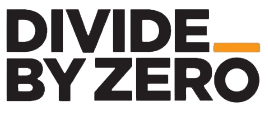In the competitive world of automotive manufacturing, efficiency and precision are paramount. Custom tooling and fixtures are essential for assembly lines, ensuring that each part is produced to exact specifications. Traditional methods of producing these tools can be time-consuming and costly. However, 3D printing has emerged as a game-changer, enabling the rapid production of custom tooling and fixtures. This blog illustrates how 3D printing is transforming tooling and fixture production in the automotive industry, reducing lead times and improving manufacturing efficiency.
1. The Role of Tooling and Fixtures in Automotive Manufacturing
Tooling
Tooling refers to the various tools used in the manufacturing process, such as molds, dies, jigs, and cutting tools. These tools are critical for shaping, assembling, and inspecting automotive components. Custom tooling ensures that each part is produced to exact specifications, maintaining consistency and quality.
Fixtures
Fixtures are devices used to hold, support, or locate a workpiece during manufacturing operations. They ensure that parts are correctly aligned and held securely, facilitating accurate and repeatable processes. Custom fixtures are tailored to specific parts and processes, enhancing efficiency and reducing the risk of errors.
2. Benefits of 3D Printing for Tooling and Fixture Production
Rapid Prototyping and Production
Traditional methods for producing tooling and fixtures can take weeks or even months, as they often require complex machining and fabrication processes. 3D printing significantly reduces lead times by allowing for rapid prototyping and production. Tools and fixtures can be designed and printed within days, enabling faster iteration and deployment.
Cost Savings
Producing tooling and fixtures using conventional methods can be expensive due to the need for specialized equipment and labor. 3D printing reduces costs by eliminating the need for complex machining and minimizing material waste. Additionally, the ability to produce tools on-demand reduces inventory costs.
Design Flexibility
3D printing offers unparalleled design flexibility, allowing for the creation of complex geometries that are difficult or impossible to achieve with traditional methods. This flexibility enables the production of lightweight yet robust tools and fixtures, which can improve ergonomics and reduce operator fatigue.
Customization and Optimization
3D printing allows for the customization and optimization of tooling and fixtures to meet specific requirements. This includes designing tools that are perfectly suited to the unique geometries and tolerances of particular components, leading to improved accuracy and efficiency in the manufacturing process.
3. Applications in the Automotive Industry
Custom Jigs and Fixtures
3D printing is widely used to produce custom jigs and fixtures for assembly lines. These tools help align and secure parts during assembly, ensuring precision and repeatability. For example, Ford uses 3D printing to create custom jigs for aligning body panels, which has improved the accuracy and speed of the assembly process.
Inspection Fixtures
Inspection fixtures are used to hold parts in place for quality control checks. 3D printing enables the rapid production of customized inspection fixtures that match the exact dimensions of the parts being inspected. This ensures that quality checks are accurate and reliable, reducing the risk of defective parts reaching the market.
Tooling for Composite Parts
Composite materials are increasingly used in automotive manufacturing due to their lightweight and high-strength properties. 3D printing is ideal for producing tooling for composite parts, such as molds and lay-up tools. These tools can be quickly and cost-effectively produced, allowing for faster development and production of composite components.
4. Case Studies from Divide By Zero Technologies
Custom Assembly Line Fixtures
Divide By Zero Technologies has developed advanced 3D printing solutions that enable automotive manufacturers to produce custom fixtures for their assembly lines. These fixtures are designed to improve the efficiency and accuracy of assembly operations, leading to reduced cycle times and higher quality. Their Aion 500 MK2 printer, with its advanced Auto-Switchover technology, ensures uninterrupted printing for large-scale projects, significantly boosting productivity.
Ergonomic Tooling
Divide By Zero’s 3D printing technology has been used to create ergonomic tooling that reduces operator fatigue and enhances safety. By designing tools that are lightweight and easy to handle, manufacturers can improve working conditions and productivity on the assembly line.
Rapid Tooling Development
The rapid prototyping capabilities of Divide By Zero’s 3D printers have enabled automotive manufacturers to quickly develop and iterate on new tooling designs. This has significantly reduced the time required to bring new tools to the production floor, accelerating the overall manufacturing process.
Conclusion
3D printing is revolutionizing the production of tooling and fixtures in the automotive industry. By enabling rapid prototyping, reducing costs, and offering unparalleled design flexibility, 3D printing enhances manufacturing efficiency and precision. Divide By Zero Technologies is at the forefront of this transformation, providing advanced 3D printing solutions that empower automotive manufacturers to optimize their assembly lines. As the technology continues to evolve, the impact of 3D printing on tooling and fixture production will only grow, driving further advancements in automotive manufacturing.

